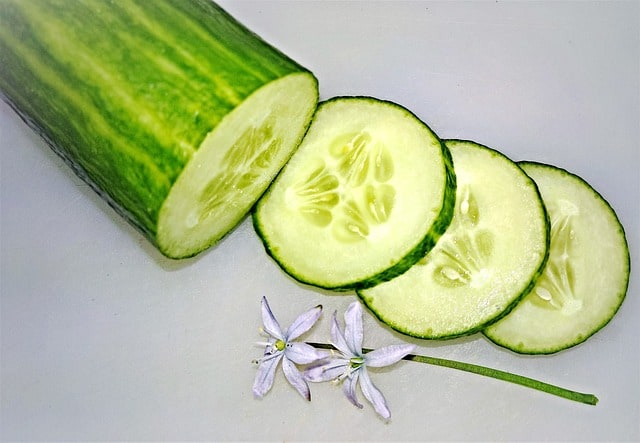Do Cucumbers Have Lectins?
Naturally, you may be wondering if cucumbers contain lectins, especially if you want to reduce how many lectins you’re eating.

In one study, lectins were found in cucumbers with mixed results. Specifically, fruit of the cucumber contained lectins. In another study, the fruit, rind, and seeds all tested negative for lectins.
Are Cucumbers Low In Lectins?
In one study, cucumbers, scientifically known as Cucumis Sativus, were tested for lectin activity and found lectin activity in some results when testing the fruit of the cucumber.
In another study, the fruit, rind, and seed of cucumber were tested and found no lectin activity when tested against human blood.
This does not necessarily mean cucumbers don’t have lectins, but at least, there was no positive result.

Much of the research that does show lectin activity often is in the skin and seeds of the food, and often shows higher amounts of lectins.
Therefore, it would make sense to think that the skin and seeds of cucumbers have more lectins. While we haven’t seen any research for cucumbers specifically that shows this, you can of course choose not eat the skin or seeds of the cucumber.
Removing the seeds from a cucumber can be done with a spoon after cutting the cucumber in half length-wise and removing the skin can be done with a knife, such as shown for this cucumber.
This research would seem to suggest that cucumbers are relatively low in lectins, although perhaps not as much as some other foods. This could also vary depending on the strain and other factors which are mentioned more below.
Are Cucumbers High In Lectins?
One study showed that cucumbers did show lectin activity when the fruit of the cucumber was tested.
Another study showed that the cucumber did not show lectin activity when the fruit, rind, and seed were tested.
Some studies show amounts of lectins measured, such as having 76 Hau/g (Hemagglutinating units/gram), but we haven’t seen any such research for cucumbers.
Are Cucumbers Lectin-Free?
It’s hard to say whether any food is lectin-free, partially because some lectins do not react to certain testing methods. Also, there may be a threshold phenomenon going on, where lectin activity will only show up if there are enough lectins. Additionally, lectin quantity may vary from strain to strain, or potentially even from harvest to harvest, or from cucumber to cucumber!
That being said, one study did show lectin activity when the fruit of the cucumber was tested, meaning it did contain lectins.
We haven’t seen any research that shows specifically quantity of lectins in cucumbers, or in different parts of the cucumber, such as 100 Hau/g in the skin or 50 Hau/g in the fruit.

In the study that did show lectin activity, human blood was used for testing, and the results showed no lectin activity in A and B blood types, but did show activity in AB and O blood types.
Limitations of and More Details on Research on Lectins in Cucumbers
As mentioned above, how many lectins there are in cucumbers may vary from cucumber to cucumber for a number of reasons. Furthermore, there may be a certain threshold of lectins before they show up.
One study did show that there was lectin activity, but we did not see anything about the amounts.
In that study, 1g of edible portions from cucumber were used and 2 of the blood types (AB and O) showed lectin activity, upon observation under a microscope at 100x magnification.
Conclusion
In conclusion, one study did show lectin activity in cucumbers, whereas another did not. You could eat cucumber without the skin or seeds, since oftentimes it seems that seeds and skins contain more lectins, but we haven’t seen any research showing that specifically for cucumbers.
We also haven’t seen any research that shows how much lectins cucumbers have compared to other foods. Ultimately, the choice is yours!
Resources:
https://doi.org/10.1515/sjecr-2016-0031
http://medicinalplants-kr.org/
